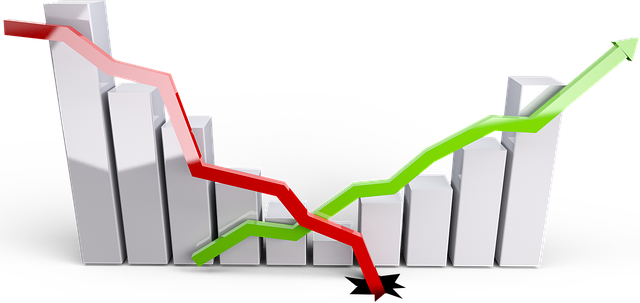Australian investors can reap substantial rewards from leverage trading in forex, commodities, and equities, but it's a high-risk endeavor. Expert insights are vital for understanding market trends, risk management, and regulations like ASIC guidelines. Effective strategies include setting stop-loss orders, diversifying investments, and staying informed about regulatory changes. Case studies show successful leverage trading with margin lending and short-selling, yet the future brings challenges and opportunities in this evolving digital landscape.
In Australia, leverage trading dynamics are evolving rapidly under the influence of expert insights and market trends. This article delves into the intricate world of high-risk, high-reward trading strategies, offering valuable insights for investors. We explore best practices in risk management crucial for navigating volatile markets, while examining the regulatory framework shaping trading decisions. Through case studies, we highlight successful leverage trades within the AU landscape. Lastly, we preview future trends, providing a comprehensive guide for traders in this ever-changing environment.
- Understanding Leverage Trading Dynamics in Australia
- Expert Analysis: Market Trends Shaping Strategies
- Risk Management: Best Practices for Leverage Traders
- Regulatory Framework Impacts Trading Decisions
- Case Studies: Successful Leverage Trades in AU
- Future Outlook: Evolving Leverage Trading Landscape
Understanding Leverage Trading Dynamics in Australia

Leverage trading is a complex yet powerful tool for Australian investors, offering both significant rewards and potential risks. In this landscape, expert insights play a pivotal role in guiding traders to make informed decisions. Australia’s financial markets are dynamic, with various assets like forex, commodities, and equities providing ample opportunities for leveraging. Understanding margin requirements, risk management strategies, and the unique regulatory environment is essential for successful leverage trading.
Traders can benefit from professional advice on when to employ leverage, how much to borrow, and which instruments suit their risk profiles. With proper knowledge, Australian investors can navigate the markets effectively, maximising returns while minimising exposure to potential losses. This nuanced approach ensures that leverage trading becomes a strategic advantage rather than a pitfall in the local financial scene.
Expert Analysis: Market Trends Shaping Strategies

In the dynamic landscape of Australian financial markets, expert insights play a pivotal role in shaping successful leverage trading strategies. Market trends, driven by economic indicators, geopolitical events, and investor sentiment, constantly evolve, presenting both opportunities and challenges for traders. Analyzing these trends requires a deep understanding of various factors that influence asset prices.
Experts employ sophisticated tools and techniques to interpret market data, identify patterns, and predict future movements. By closely monitoring key metrics such as interest rates, inflation, and exchange rates, they can offer valuable insights into the direction of leverage trading. This analysis enables traders to make informed decisions, capitalizing on rising trends while mitigating risks associated with declining markets.
Risk Management: Best Practices for Leverage Traders

Leverage traders in Australia must prioritize robust risk management strategies to navigate the volatile nature of this high-risk, high-reward practice. Setting clear stop-loss orders is non-negotiable; these orders automatically limit potential losses, protecting capital and providing a level of assurance during market downturns. Diversification across various assets and sectors is another key best practice, spreading risk and mitigating the impact of any single loss.
Traders should also remain disciplined in adhering to their pre-determined risk tolerance levels and trading plan. Regularly reviewing and adjusting position sizes, based on current market conditions and individual risk appetite, ensures a sustainable approach to leverage trading. Moreover, staying informed about regulatory changes and industry news specific to Australia’s financial landscape is vital for traders to adapt their strategies accordingly.
Regulatory Framework Impacts Trading Decisions

In Australia, a robust regulatory framework significantly influences trading decisions, particularly in leverage trading. The Australian Securities and Investments Commission (ASIC) plays a pivotal role by enforcing strict rules to protect investors while promoting fair market practices. These regulations cover various aspects, including margin lending, derivative contracts, and reporting requirements, all of which are crucial factors when considering leverage trading strategies.
The framework ensures transparency and accountability, enabling traders to make informed decisions. It also sets clear guidelines on risk management, obliging financial institutions and investors to adhere to specific standards. This regulatory environment fosters a stable and trustworthy market, attracting both local and international traders who seek opportunities in Australia’s leverage trading landscape.
Case Studies: Successful Leverage Trades in AU

In Australia, leverage trading has proven to be a game-changer for many investors, with successful case studies highlighting its potential. One notable example involves a retail trader who utilized margin trading to capitalize on a rising market trend. By borrowing funds from their broker, they were able to increase their position size, ultimately leading to significant gains when the market surged. This strategy required careful risk management, which the trader implemented by setting stop-loss orders and diversifying their portfolio across various assets.
Another successful leverage trading case study involves an institutional investor who employed a short-selling strategy during a market downturn. By leveraging their capital, they were able to amplify potential losses but also held the promise of substantial gains if the market recovered. This approach required a deep understanding of market dynamics and timely execution, which the investor demonstrated by closely monitoring economic indicators and adapting their strategy accordingly.
Future Outlook: Evolving Leverage Trading Landscape

The future of leverage trading in Australia looks set to be shaped by technological advancements and changing investor preferences. With the ever-evolving digital landscape, online platforms are increasingly becoming more sophisticated, offering traders seamless access to global markets with enhanced tools for risk management and analysis. This shift towards digitalization is expected to intensify competition among brokers, driving them to innovate and provide more diverse leverage trading options tailored to different investor needs.
Furthermore, as market dynamics become more complex, there will be a growing emphasis on educating investors about the intricacies of leverage trading. Regulators and financial institutions are likely to play a pivotal role in promoting responsible leveraging practices, ensuring traders are well-informed and equipped to make sound decisions. This evolving landscape promises exciting times for Australian traders, presenting both opportunities and challenges as they navigate the dynamic world of leverage trading.
Leverage trading in Australia is a dynamic and evolving landscape, shaped by expert insights and market trends. As regulated as ever, traders here must navigate a complex environment, leveraging both opportunities and risks. By understanding the regulatory framework, adopting best practices in risk management, and staying informed about market shifts, Australian traders can capitalize on successful leverage trades. The future outlook for this strategy remains promising, with continuous developments in technology and financial instruments promising to further enhance its accessibility and profitability.
